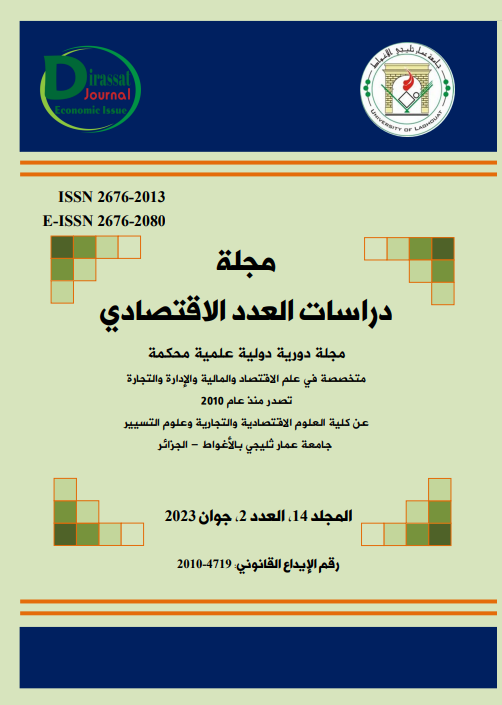Beneish’s model for detecting earnings management SAIDAL company for the period from 2018 to 2021 as a model
Abstract
this study, seeks to address the issue of earnings management measurement, as practices that affect financial and accounting information and therefore the decisions of its various users. Several studies have produced models to measure and discover them. Among these models, we find the Beneish 1999 model, which relied on financial reporting data for Consecutive periods, regression and probabilities models to study the relationship between the variables of the model, which enables us to conclude whether the institution relies on these practices.
By applying this model to the financial reports of Saidal Company, we concluded that there is no evidence -With the exception of the year 2018- on the potential application of earnings management practices. The study also concluded that the external auditor and the tax administration should rely on these forms to detect profit manipulation, as they are among the authorities responsible for proving the accuracy of the financial statements and that they are free from these methods on the one hand, in addition to their ability to obtain all information accurately on the other hand.
Downloads
References
AMAT, O., BLAKE, J., & DOWDS, J. (1999, december). the ethics of creative accounting. EconomicsWorking Paper .
BAGHAR, N. (2018). la gestion des résultats comptables: l'influence de la taille, de l'endettement et de la performance, cas des sociétés marocaines cotées. revue du controle de la comptabilité et de l'audit (6).
BENEISH, M. (1999). the detection of earnings manipulation. financial analysts journal, 55 (5).
JOOSTE, L. (2011). A comparison of ethical perceptions of earnings-management practices. Nelson Mandela Metropolitan University.
KARA, E., UGURLU, M., & KORPI, M. (2015). using Beneish model in identifying accounting manipulation: an empirical study in BIST manufacturing industry sector. journal of accounting, finance and auditing studies, 1 (1), 21-39.
MD TANJIL, M., & ISHTIAK, A. (2020). Detection of Financial Statement Frauds Using Beneish model: empirical evidence from listed pharmaceutical companies in Bangladesh. international journal of management, accounting and economics, 7 (9).
METZKER, Z., & SIEKELOVA, A. Explanatory Power of Earnings Management Models.
och Shekou Tounkara, A. H. (2011). A Comparative Study of Models to Reveal Earnings Management - At Stockholm Exchange Market from year 2000-2009. Södertörn University, Department of Economics and Business .
Ramírez-Orellana, A., Martínez-Romero, M. J., & GARRIDO, T. m. (2017, november 11). Measuring fraud and earnings management by a case of study: Evidence from an international family business.
Sanel HALILBEGOVIC, a. a. (2020). Application of Beneish M-score model on small and medium enterprises in Federation of Bosnia and Herzegovina. EASTERN JOURNAL OF EUROPEAN STUDIES, 11 (1).
YADAV, B. (2013). CreativeAccounting: A LiteratureReview. The Standard International Journals, Financial & Business Management, 1 (5).
مجمع صيدال. (2023). Consulté le أفريل 3, 2023, sur https://www.saidalgroup.dz/
Copyright (c) 2023 خيرة بوهالي

This work is licensed under a Creative Commons Attribution-NonCommercial 4.0 International License.
















